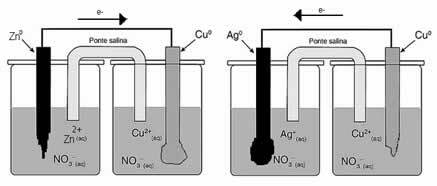Produced through the fermentation of starch and other sugars, especially sugarcane, ethanol, also called ethyl alcohol, it is a highly flammable and colorless biofuel, being widely used in automobiles. This substance is renewable, as its raw material is obtained from plants cultivated by man.
Ethanol can be obtained from sugarcane, corn, beets, cassava, potatoes, etc. The raw material is subjected to alcoholic fermentation, with the action of the microorganism Sacchromyces cerevisiae. However, sugarcane is the most used, as it has greater productivity. After being processed, ethanol can be used pure (in adapted engines) or mixed with gasoline as fuel.
Brazil stands out on the global stage as the country with the most advanced technology in the manufacture of ethanol. The world production of this fuel is in the order of 40 billion liters – Brazil is responsible for the production of 15 billion liters. In the country, for each ton of sugarcane, 66 liters of alcohol and 700 to 800 liters of vinasse or waste are produced.
Do not stop now... There's more after the advertising ;)
One of the biggest challenges for the mills is to reduce the amount of by-products (bagasse and vinasse) generated during the manufacture of ethanol. Some distilleries use bagasse as fuel during the production process. Another effective alternative is to carry out continuous fermentation, reducing the amount of vinasse by up to 75%.
In an attempt to reduce the use of oil, ethanol appears as an efficient, clean (emitting less polluting gas) and cheaper alternative. However, its use without proper planning can generate a series of socioeconomic disorders: increases in sugarcane monoculture latifundiums, rising values of some foodstuffs, soil depletion, erosion, etc.
See more:
Proalcohol - The characteristics of the National Alcohol Program.
By Wagner de Cerqueira and Francisco
Graduated in Geography
Brazil School Team
Biofuels - Fuels
geography - Brazil School
Would you like to reference this text in a school or academic work? Look:
FRANCISCO, Wagner de Cerqueira e. "Ethanol"; Brazil School. Available in: https://brasilescola.uol.com.br/geografia/etanol.htm. Accessed on June 27, 2021.


